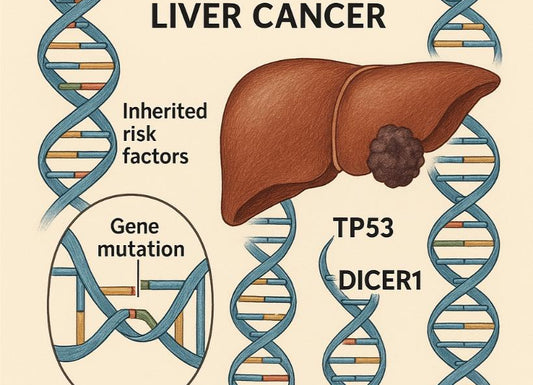Metastatic Liver Cancer: Symptoms, Diagnosis, Treatment, and Prognosis
 Written By
Yusela Aquino
Written By
Yusela Aquino

Metastatic liver cancer occurs when cancer from another part of the body spreads to the liver. Unlike primary liver cancer, which originates in the liver, metastatic liver cancer is secondary, meaning cancer cells have traveled from a different organ. Since the liver filters blood from throughout the body, it is particularly vulnerable to metastases from other cancers. Early detection is key, as metastatic liver cancer is often a sign of advanced disease progression.
Many individuals do not realize their cancer has spread until symptoms appear. Proactive screening and awareness can make a significant difference. By understanding how liver metastases develop and the symptoms they cause, patients and their families can make informed decisions about treatment options and management strategies.
How Does Cancer Spread to the Liver?
Metastatic liver cancer develops when cancer cells break away from a primary tumor, travel through the bloodstream or lymphatic system, and establish new tumors in the liver. The likelihood of liver metastasis depends on the type of primary cancer, genetic factors, and overall health status.
Since the liver plays a critical role in detoxification, digestion, and blood regulation, metastases can significantly impact its function over time. Certain cancers, such as colorectal cancer, have a high tendency to metastasize to the liver early in their progression. Identifying risk factors and monitoring at-risk patients can help facilitate early detection and intervention.
Primary Liver Cancer vs. Liver Metastases

Primary liver cancer originates in the liver, with hepatocellular carcinoma (HCC) being the most common type. It is typically linked to chronic liver conditions such as hepatitis or cirrhosis. Liver metastases, on the other hand, originate from cancers that started elsewhere—most commonly in the colon, breast, lungs, pancreas, or prostate.
Because liver metastases indicate that cancer has spread, treatment strategies differ significantly from those used for primary liver cancer. While primary liver cancer may be treated with localized therapies, metastatic liver cancer often requires systemic treatments targeting cancer cells throughout the body. Understanding this distinction is essential for developing an effective treatment plan.
What Happens When Cancer Spreads to the Liver?
When cancer cells establish themselves in the liver, they grow into secondary tumors that interfere with liver function. The liver is responsible for filtering toxins, producing bile, and regulating metabolism, so any disruption can lead to symptoms such as jaundice, abdominal pain, and unexplained weight loss.
Liver metastases often indicate that cancer has spread, as the liver’s extensive blood supply makes it a common site for metastasis. However, small liver metastases may not cause noticeable symptoms at first. Regular screenings, imaging tests, and blood work are crucial for individuals diagnosed with high-risk cancers, as early detection can improve treatment outcomes.
Cancers Most Likely to Spread to the Liver

Several cancers commonly metastasize to the liver, with colorectal cancer being the most frequent cause. Other high-risk cancers include breast, lung, pancreatic, and prostate cancer. Each of these cancers spreads at different rates and through various pathways, but they all share the liver as a common metastatic site due to its rich blood supply.
For example, 25%-50% of advanced colorectal cancer cases involve liver metastases, as the liver receives blood directly from the intestines. Breast and lung cancers also frequently spread to the liver, although they may do so at a slower pace. Understanding which cancers pose the highest risk can help guide proactive monitoring and treatment strategies.
How Quickly Does Colon Cancer Spread to the Liver?
The rate at which colon cancer metastasizes to the liver varies between patients. The timing of liver metastases in colorectal cancer patients varies significantly. Approximately 15–25% of patients present with liver metastases at the time of their initial diagnosis, while an additional 18–25% develop distant metastases within five years. This variation is influenced by factors such as tumor genetics, immune response, and the effectiveness of treatment. For instance, studies have shown that liver metastases occurring within 30 months of the primary tumor diagnosis are associated with poorer disease-free survival.
Unfortunately, many cases of liver metastases from colon cancer go unnoticed until symptoms arise. Regular follow-ups, imaging scans, and blood tests play a critical role in detecting metastases early. At-home monitoring tools, like Ribbon Checkup kits, can help track bilirubin levels and provide earlier warnings about potential disease progression.
How Metastatic Liver Cancer Develops
The process of cancer metastasis to the liver involves several key steps:
1. Detachment and Invasion. Cancer cells acquire genetic mutations that enable them to detach from the primary tumor and invade surrounding tissues.
2. Intravasation. These invasive cells enter the bloodstream or lymphatic system, providing pathways to distant organs, including the liver.
3. Survival in Circulation. While in transit, cancer cells must evade destruction by the immune system to survive.
4. Extravasation and Colonization. Upon reaching the liver, cancer cells exit the circulation and infiltrate the liver tissue, where they can begin to proliferate.
5. Angiogenesis. To support their growth, these metastatic cells stimulate the formation of new blood vessels, ensuring an adequate supply of nutrients and oxygen.
6. Progression and Impairment. As metastatic tumors expand, they can disrupt normal liver function, leading to clinical symptoms.
This metastatic cascade is influenced by interactions between cancer cells and the liver's unique microenvironment, which can either suppress or promote tumor growth.
Understanding these mechanisms is crucial for developing therapeutic strategies aimed at preventing or treating liver metastases.
How Cancer Cells Travel to the Liver

The bloodstream and lymphatic system serve as pathways for cancer cells to reach the liver. Some cancers, such as colorectal cancer, spread through the portal vein, which directly connects the intestines to the liver. Others travel via lymphatic routes, entering the liver through nearby lymph nodes.
Once in the liver, cancer cells must evade the body’s immune defenses to form secondary tumors. Some achieve this by suppressing immune responses, while others create an environment conducive to tumor growth. Understanding these mechanisms has led to the development of targeted therapies aimed at blocking metastasis early in its progression.
Risk Factors for Liver Metastases
Several factors influence the likelihood of cancer spreading to the liver:
· Primary Cancer Type: Cancers of the colon, breast, lung, and pancreas are most likely to metastasize to the liver.
· Genetic Mutations: Certain mutations make cancer cells more aggressive and capable of surviving in new environments.
· Immune System Function: A weakened immune system increases the risk of metastasis.
· Cancer Stage at Diagnosis: The later cancer is detected, the greater the likelihood of metastasis.
Regular checkups and proactive monitoring, including tools like Ribbon Checkup kits, can help track cancer markers and provide early warnings, improving the chances of timely intervention.
The Importance of Early Detection

Because metastatic liver cancer often develops silently, early detection is critical for improving outcomes. Routine imaging, blood tests, and genetic screenings can identify metastases before symptoms appear, allowing for earlier and more effective treatment options.
By staying informed and proactive, patients and healthcare providers can work together to detect and manage metastatic liver cancer more effectively, ultimately improving quality of life and treatment success.
Related References
- What Cancers Cause Elevated Liver Enzymes?
- Life Expectancy with Fatty Liver Disease: What You Need to Know
- Drinking Alcohol Damages Which Organ?
References
- Andryszkiewicz, W., Misiąg, P., Karwowska, A., Resler, Z., Wojno, A., Kulbacka, J., Szewczyk, A., & Rembiałkowska, N. (2024). Cancer metastases to the liver: Mechanisms of tumor cell colonization. Pharmaceuticals, 17(9), 1251. https://doi.org/10.3390/ph17091251
- Kow, A. W. C. (2019). Hepatic metastasis from colorectal cancer. Journal of Gastrointestinal Oncology, 10(6), 1274–1298. https://doi.org/10.21037/jgo.2019.08.06
- Liver metastases | Cancer spread to liver. (n.d.). American Cancer Society. https://www.cancer.org/cancer/managing-cancer/advanced-cancer/liver-metastases.html
- Gomez, D., & Cameron, I. C. (2010). Prognostic scores for colorectal liver metastasis: clinically important or an academic exercise? HPB, 12(4), 227–238. https://doi.org/10.1111/j.1477-2574.2010.00158.x
- Griscom, J. T., & Wolf, P. S. (2023, August 14). Liver metastasis. StatPearls - NCBI Bookshelf. https://www.ncbi.nlm.nih.gov/books/NBK553118/
- Ma, R., Feng, Y., Lin, S., Chen, J., Lin, H., Liang, X., Zheng, H., & Cai, X. (2015). Mechanisms involved in breast cancer liver metastasis. Journal of Translational Medicine, 13(1). https://doi.org/10.1186/s12967-015-0425-0
- Martin, J., Petrillo, A., Smyth, E. C., Shaida, N., Khwaja, S., Cheow, H. K., Duckworth, A., Heister, P., Praseedom, R., Jah, A., Balakrishnan, A., Harper, S., Liau, S., Kosmoliaptsis, V., & Huguet, E. (2020). Colorectal liver metastases: Current management and future perspectives. World Journal of Clinical Oncology, 11(10), 761–808. https://doi.org/10.5306/wjco.v11.i10.761
- Matanes, E., & Gotlieb, W. H. (2021). Pathophysiological and anatomical basis of lymphatic transit of cancer cells and role of the lymphatic system: a review of published literature. Chinese Clinical Oncology, 10(2), 14. https://doi.org/10.21037/cco-20-205
- Metastatic Stage 4 colorectal cancer Facts & survival Rate. (n.d.). City of Hope. https://www.cancercenter.com/cancer-types/colorectal-cancer/types/metastatic-colorectal-cancer
- Types of liver cancer. (n.d.). Cancer Research UK. https://www.cancerresearchuk.org/about-cancer/liver-cancer/types
- What is secondary liver cancer? (n.d.). Cancer Research UK. https://www.cancerresearchuk.org/about-cancer/secondary-cancer/secondary-liver-cancer/about

Yusela is a medical student with a degree in Biology and a strong foundation in health communication. With experience in both research and clinical settings, she writes clear, evidence-informed content to help patients and caregivers better understand liver health, chronic disease, and transplant care.



